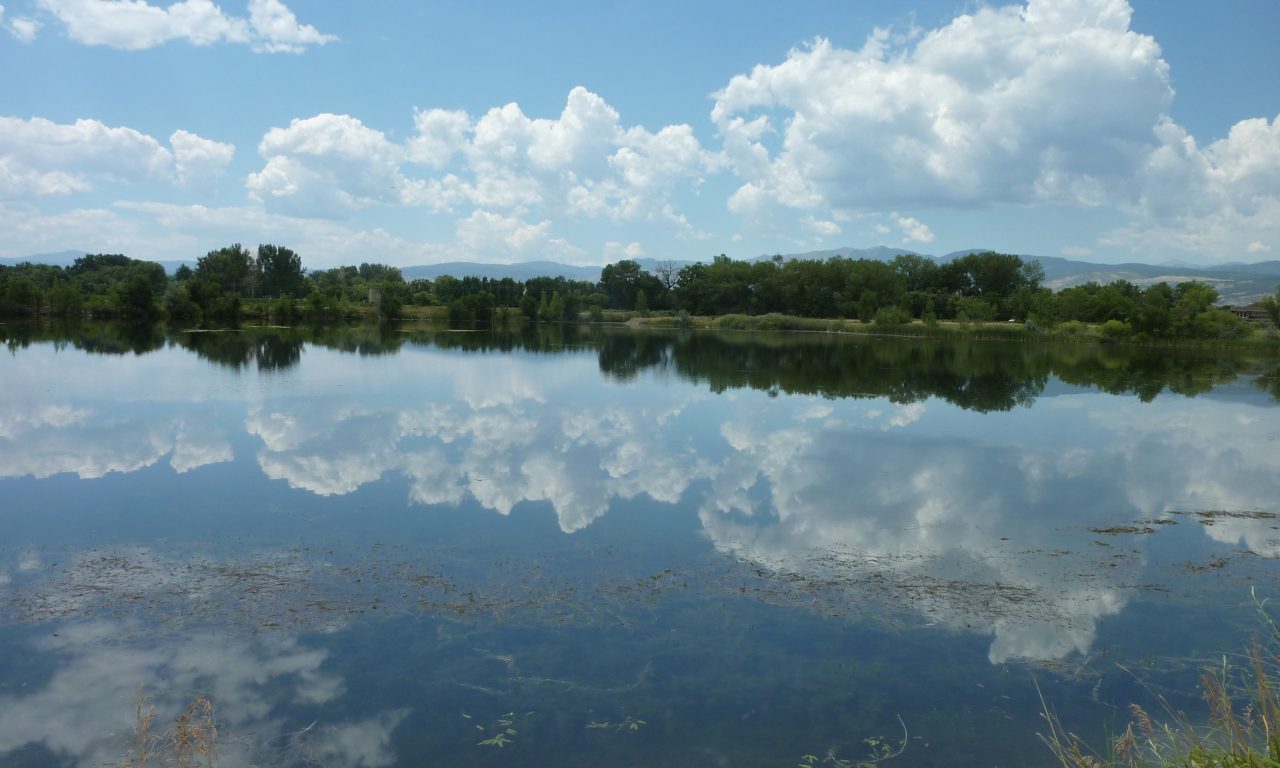The damage at Pella Crossing Open Space during the flood of September 2013 generated dramatic images of wreckage and immediate and unending pleas from the public for its repair and reopening. A multi-disciplinary team of Parks & Open Space staff, including recreation and facilities, resource management, water, wildlife and plant ecology, has been working diligently to secure funding and ensure adequate and sufficient design for the rebuilding of the reservoirs and visitor facilities. The reconstruction projects occurring at Pella Crossing are the result of the county’s collaboration with the City of Longmont, the federal government, and multiple state agencies.
Completed Projects
Last fall, the City of Longmont completed the construction of the Heron Relief Channel, the drainage channel from Pella Crossing Heron Lake to the St. Vrain River, to intercept floodwaters and guide them back to the river. In December 2015, the Board of County Commissioners approved the $3.5 million flood reconstruction project for the trails, facilities and breaches at Pella Crossing. The project will be largely funded by the Federal Emergency Management Agency (FEMA), with matching funds from the state and county. Construction is slated to begin this summer, with hopes of reopening the park by the end of the year.
The Dragonfly and Webster reservoirs at Pella Crossing were fully breached during the flood, and the embankments at Poplar and Sunset reservoirs were damaged. To address the repairs, an engineering firm was hired to generate plans that comply with the State Engineer’s Office of Dam Safety (embankments classified as dams). Emergency spillways will be constructed across each damaged embankment, along with water level controls for the ponds, to mitigate future flood events by carrying floodwaters through the reservoirs without causing berm failure.
Towards Restoration
The flood brought volumes of sediment deposition and erosion to Pella Crossing. Construction crews will need to move nearly 36,000 cubic yards of earthwork for the repairs. The trail system, trailhead, restroom and kiosk will be rebuilt, and multiple fishing and pond access sites will be repaired. Additionally, the Zweck and Turner ditch, which washed out during the flood, will be restored to its historic alignment within the park.
The Webster Pond breach caused a significant loss of water capacity in the pond; ultimately the State’s Dam Safety Branch concluded that restoring capacity to pre-flood levels would require the embankment to be considered a jurisdictional dam. The additional costs and constraints associated with a jurisdictional dam are monumental; staff concluded that keeping post-flood water levels could instead allow for wetland establishment and increased wildlife habitat values within Webster Pond. The department secured funding through the Colorado Parks and Wildlife Wetlands Program to create three acres of wetland along Webster’s shoreline. By re-contouring the sediment deposited by the flood, wetlands will be constructed to sustain wetland plants and associated wildlife. The riparian areas and pond shorelines at Pella Crossing’s reservoirs and along the stretch of St. Vrain within the open space have included habitat for waterfowl, shorebirds, songbirds, raptors and Preble’s meadow jumping mouse; the constructed wetlands will augment those habitat values.


